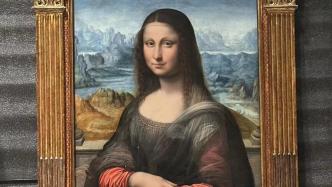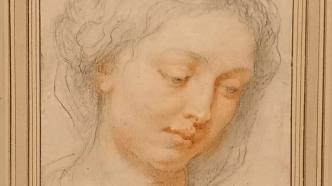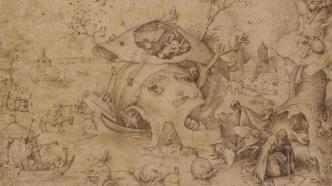
From the outstanding print designs and landscapes of Pieter Bruegel the Elder (1525-1569), to the sketches of Rubens (1577-1640), to the friendship between the artists, you can see them all through the exhibition. The Paper has learned that from March 23, the exhibition "Bruegel to Rubens - Great Flemish Paintings" will be held at the Ashmolean Museum in Oxford, showcasing Flemish paintings in the 16th and 17th centuries. There are 120 sketches by the master, more than 30 of which are exhibited for the first time, and some have been discovered recently.
These exquisite paintings from the collections of Antwerp and Oxford provide an insight into how artists honed their painting skills over the course of their careers.

Pieter Bruegel the Elder, The Temptation of Saint Anthony, circa 1556, brown ink on paper © Ashmolean Museum
Welcome to the crazy world of Pieter Bruegel the Elder, where a giant head resembles a smashed window, its open mouth is filled with people, and a man in a boat screams from his ears. Get out of it. At the same time, a strange fish is balancing on the bandage on its forehead, and the man is doing acrobatics inside the fish's body...
This is just a fantasy in Bruegel the Elder's painting The Temptation of Saint Anthony, which pays homage to his Dutch predecessor Hieronymus Bosch, who also depicted Antony's plight. It turns into a hilarious carnival filled with strange creatures and absurd events. The difference is that he looks at the madness of the world with a sad yet accepting eye.
Bruegel the Elder and Flanders appear on the title, poster and catalog cover of an exhibition at the Ashmolean Museum in Oxford. Where exactly does he come from?
Pieter Bruegel the Elder was born in 1525 in the Duchy of Brabant, formerly part of the Kingdom of the Netherlands and now part of Belgium. The Flanders region was ruled by Spain in the 16th century. On January 9, 1609, the Spanish King signed a "Twelve Years Truce Agreement" with the Northern United Provinces, recognizing the independence of the Netherlands; while in southern Flanders (now Belgium , Luxembourg), but the revolution failed due to the compromise of the great nobles, and it was still under the control of Spanish feudal autocracy and the Catholic Church. Because of the complex economic and political background, the art phenomenon in Flanders in the 17th century was also complicated. It not only reflected the aesthetic taste of the country's court nobles, churches, and merchants, but also reflected the influence of foreign art, such as the Venetian School of Painting in Italy. , Bologna School, Caravaggio's realism, and Baroque style, while also reflecting the role of the strong Dutch national art tradition.

Joris Hofnagel, The Fable of Abraham Ortelius, 1593, Plantin-Moretus Museum, Antwerp
A panoramic view of Antwerp in the exhibition shows Portuguese merchants and artists rubbing shoulders at this important North Sea port, where merchants traded monkeys, coconuts and locally caught fish. Perhaps it was the material wealth brought about by the booming Atlantic economy that made the art here so distinctive.
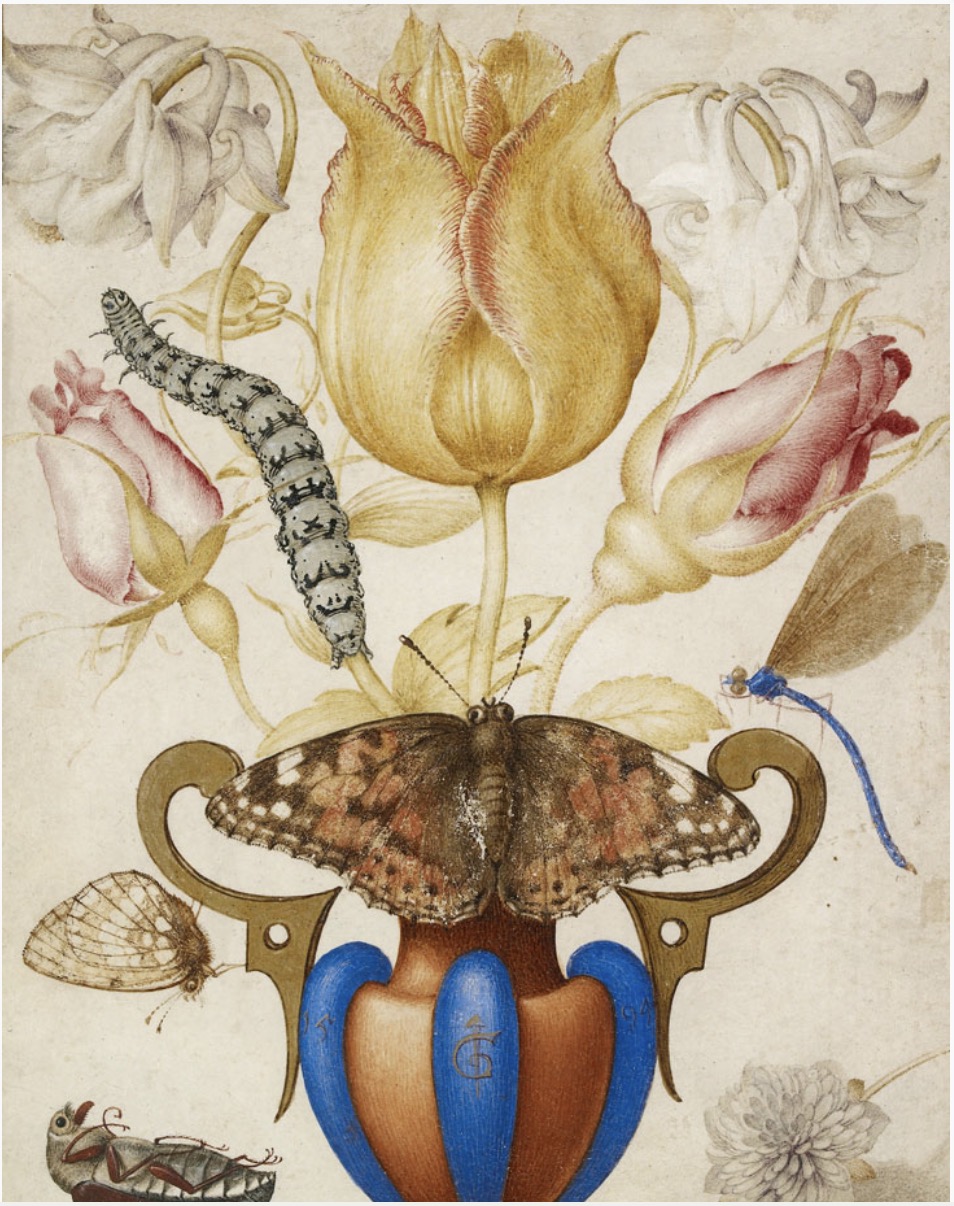
Joris Hofnagel, Vase with Flowers and Insects, 1594, © Ashmolean Museum
This undoubtedly inspired the genius of Bruegel, who had painted monkeys in the port of Antwerp and was also very familiar with ocean-going ships and windmills. But there are only a few of his works in the Oxford exhibition, and at first glance that visionary painting of the Devil of St Anthony might appear unusual. Other artists appear to lean more toward tradition, which to some means "boring." At that time, wealth and power were transferring from the Mediterranean to the Atlantic, but Italy exerted great cultural charm. The exhibition even includes the Vatican Museum’s ancient Belvedere Torso, a 1.59-meter-tall fragmented marble statue of a male nude said to have been in Rome since the 1430s and once thought to be from the 1st century BC The original, now thought to be a copy of a 1st century BC or 1st century AD sculpture, was a copy to emphasize the idea that many artists from Northern Europe traveled to Italy in the 16th century to study ancient antiquities and Renaissance masters. One of them, Jan van der Straet, who took the Italianized name Giovanni Stradano, settled in Florence to paint frescoes for its palaces, he painted Romus The image of Roose and Remus being suckled by a she-wolf brings a charming Flemish realism to the mythical scene.
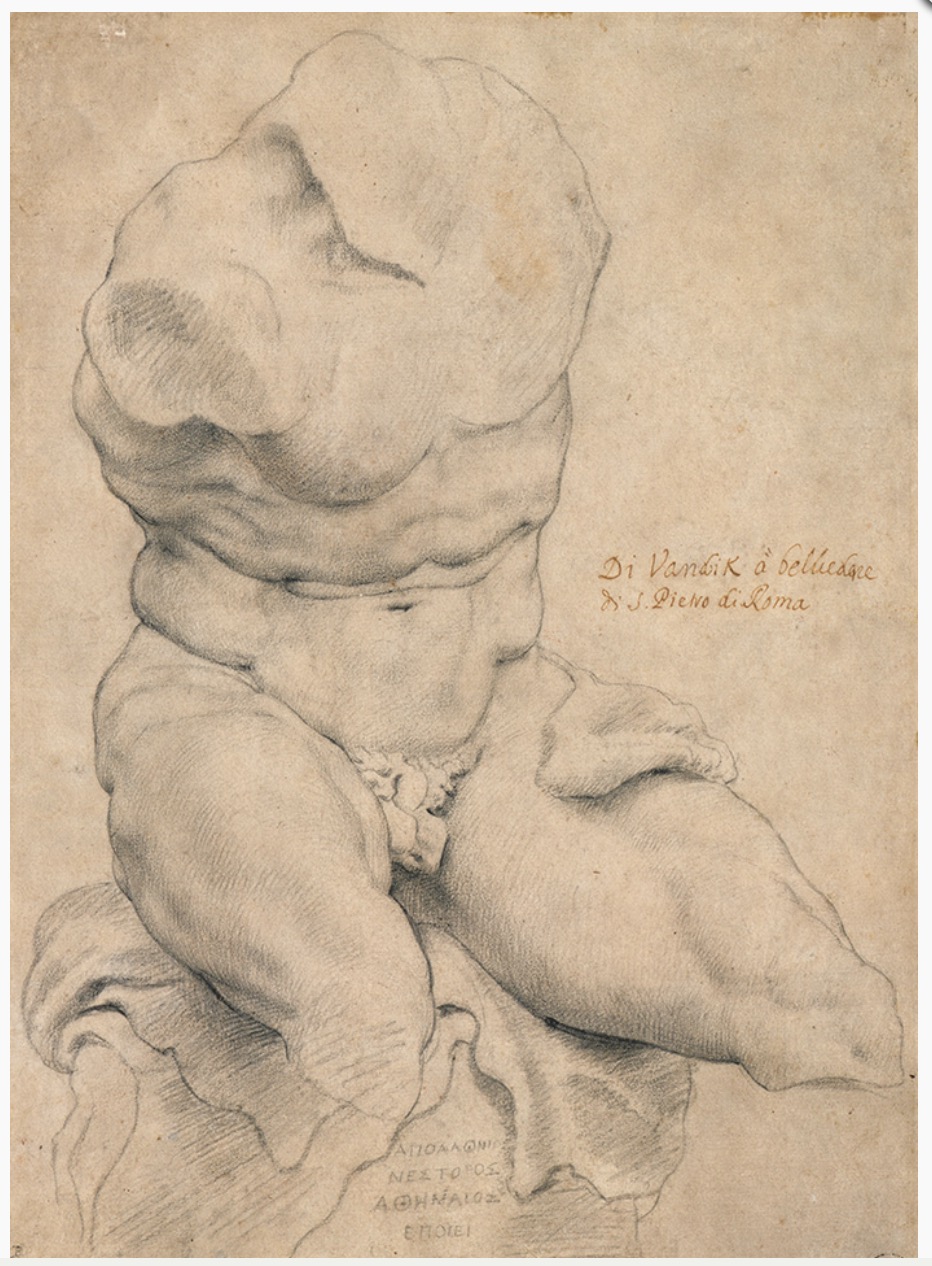
Paul Rubens, Belvedere Torso, 1600-1603, black chalk (or charcoal) on paper
In contrast, Bruegel is traditionally considered a peasant painter, untrained and crude. This is not true. His "Landscape with Village and Cattle" at the beginning of the exhibition is not a farmer's perspective on the countryside. It is an idyll and the yearning of city people for a peaceful and tranquil village. You can meditate on this little sketch for hours.

Jan Bruegel, Roman Baths at Baia, circa 1604-1605, © Ashmolean Museum
Brueghel also went to Italy. His son Jan Brueghel (Note: Pieter Brueghel the Elder had two sons, the eldest son Pieter Brueghel the Younger, born in 1564 and the younger Pieter Brueghel born in 1568. Jan Bruegel, both of whom later became painters, followed closely behind. Jan Bruegel's sketch of the ruins of the Baths of Caracalla in Rome, vast, overgrown and eerie, is the most charming souvenir of his trip to Italy.
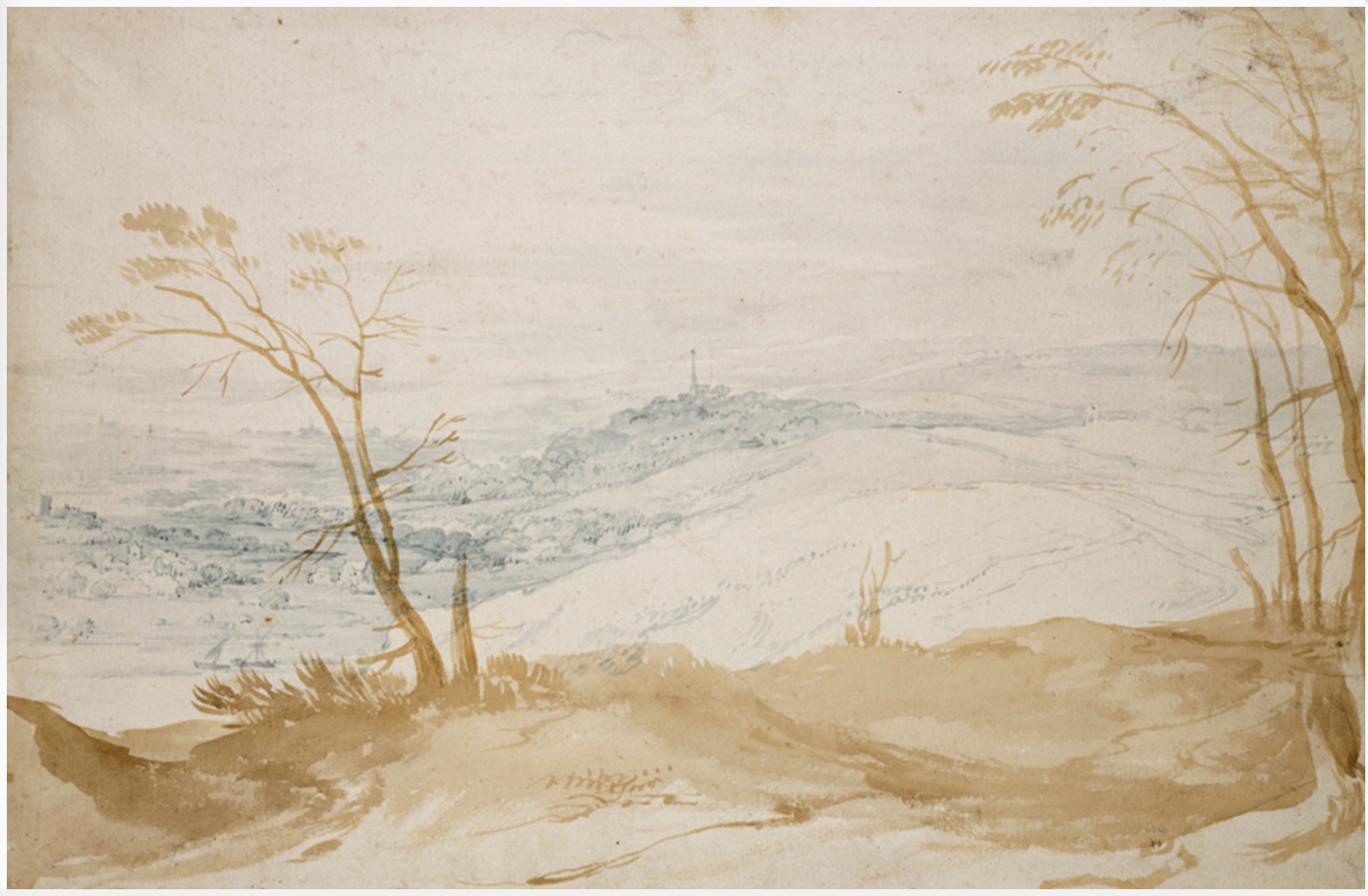
Jan Bruegel, Hilly View, 1615-1618, © Ashmolean Museum
Next to it, you can see a voluptuous portrait of the ancient Roman emperor Galba by Paul Rubens, turning the stern bust of classical portraiture into a terrifying silhouette. Rubens lived in Italy for many years, and he brought the same frenetic and manic muscles to his paintings of ancient male statues.

Paul Rubens, Study for the Head of Henry IV, circa 1622, © Plantin-Moretus Museum, Antwerp
And that's exactly the point: you can take an artist out of Flanders, but you can't take away the earthy eye for detail in these Flemish drawings. The burst of humor in Bruegel's work is also present in the work of his contemporaries, even if it is disguised as classical carnival. A 1540 sketch by Lambert Lombard shows women ecstatically worshiping Priapus, the Roman god of fertility. Sebastiaen Vrancx's 1621 depiction of a village where everything seemed normal except for a statue of a man devouring his own children towering among the trees and thatched houses, on which Frankx later based An even stranger oil painting was painted. The statue may be a comment on the fate of peasants - producing food for everyone, but always being bullied by nobles and pillaged by armies.
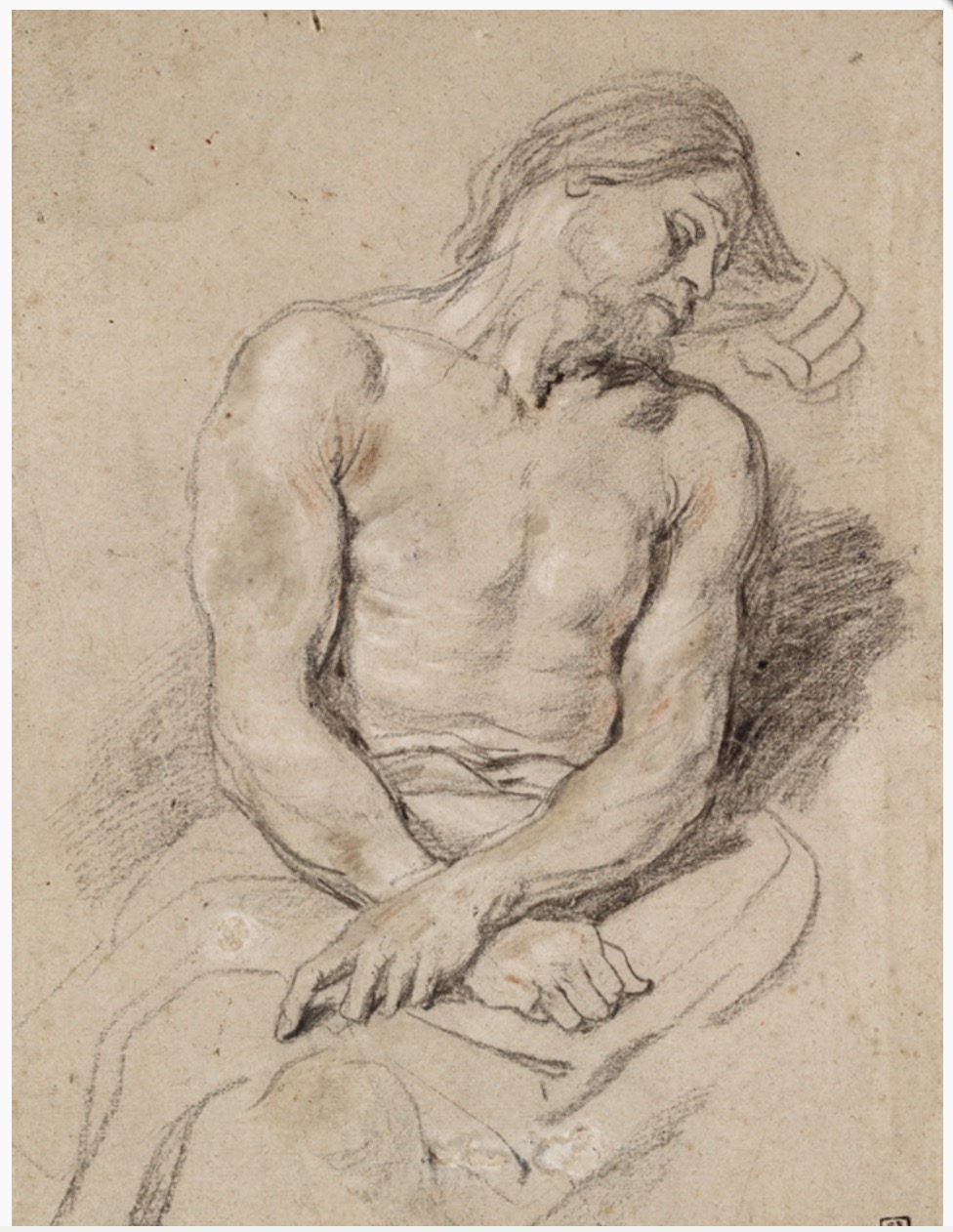
Van Dyck, The Christ, 1618-1620, © Ashmolean Museum
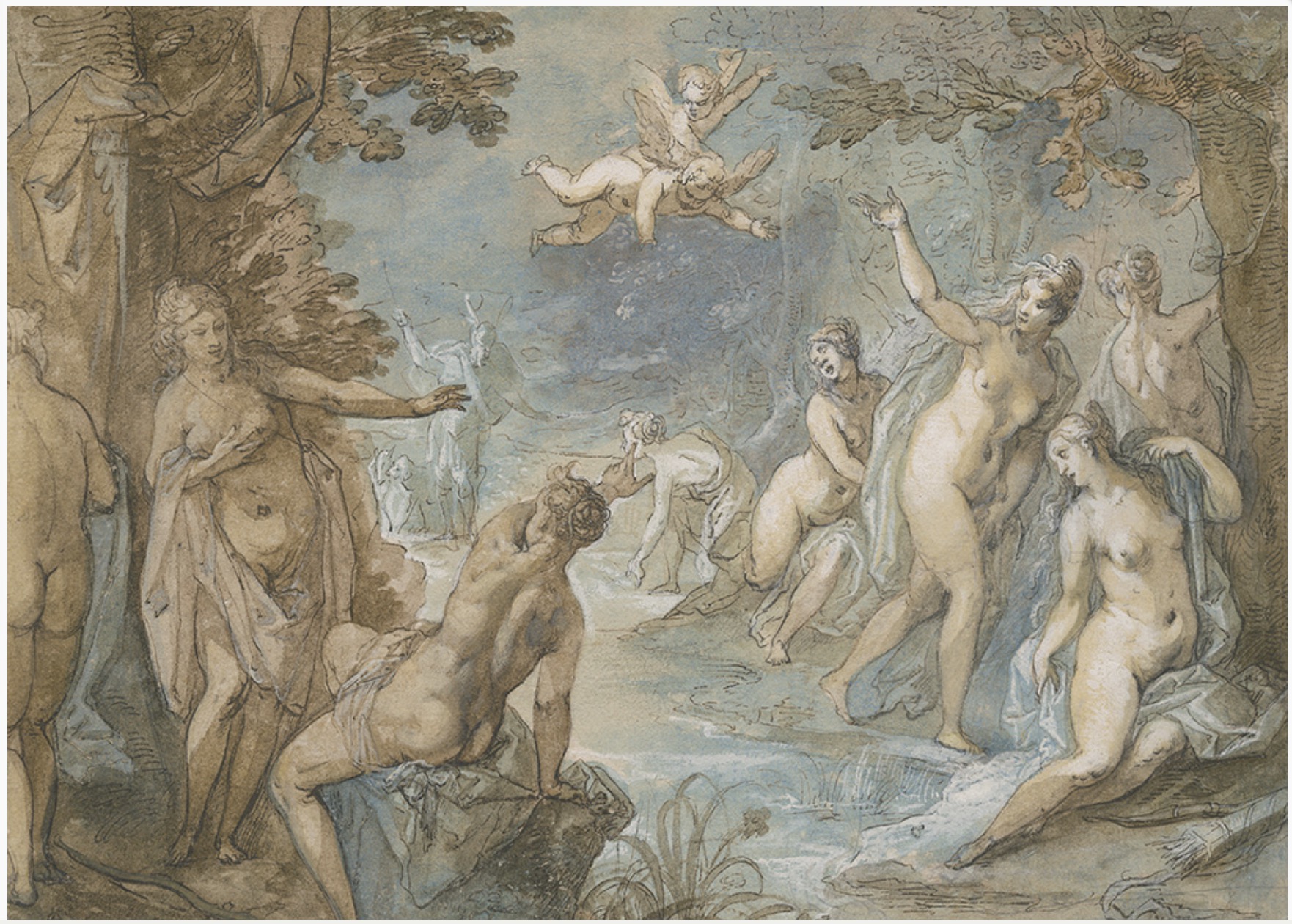
Hendrik van Baalen, Diana and Actaeon, 1605, © Plantin-Moretus Museum, Antwerp
In a painting by David Vinckboons, a Bruegelian beggar is depicted drinking wine outside an inn. Jacques Jordaens, one of the best and richest artists in the exhibition, depicts the chaotic orgy of Twelfth Night in his 1640 work The King's Banquet. Nature flourishes in these small masterpieces, sketched with rich sensitivity and precision by the painter.
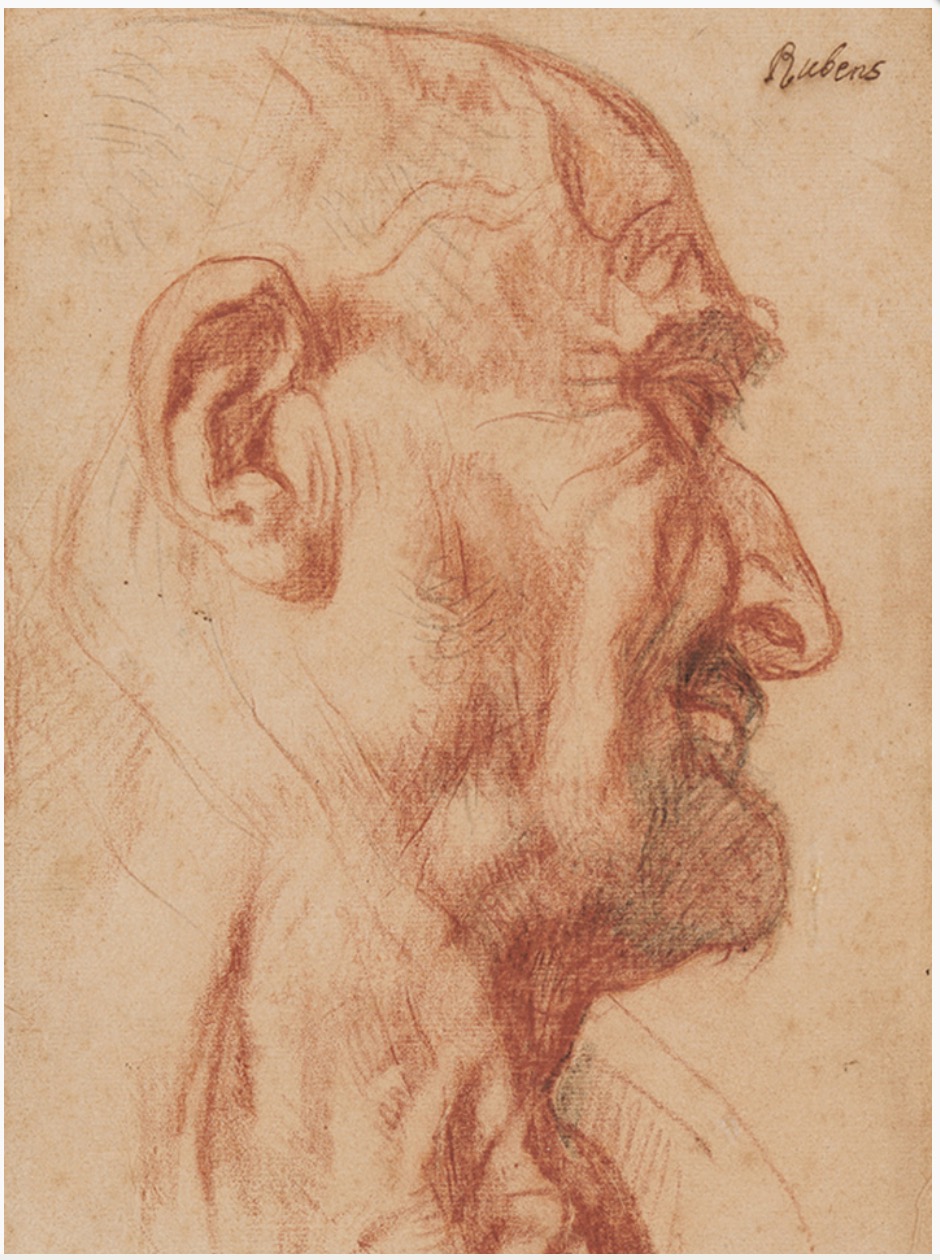
Jacob Jordans, Head of a Bald Man, circa 1645, © Ashmolean Museum
Nothing could be more homely than an earthworm drawn by an unknown artist on a blank piece of paper. For this seemingly frenetic Baroque painter, one of Rubens's woodland paintings exudes authenticity and ease.
These moving drawings take the viewer on a rich and strange journey, where curling pastel and pen lines bring bodies to life and faces freeze in memory. But they always return to the ordinary and the real. On October 1, 1659—Jordans marked the date on the paper—he saw five women discussing politics in the street and immediately drew them. Four centuries later, they are still engrossed in conversation.
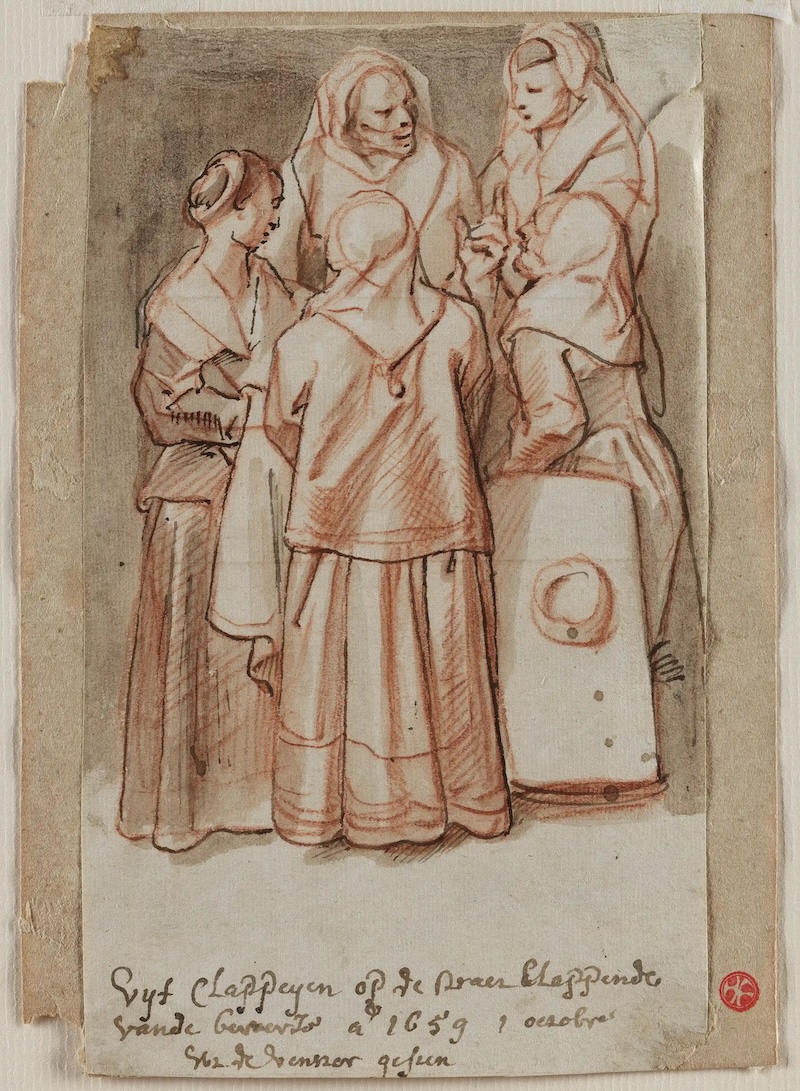
Jacob Jordans, Five Women Chatting, Private Collection, Antwerp
Note: The exhibition will last until June 23. This article is compiled from the Guardian. The original title is "Strange and humble Flemish art, the details can be penetrated".

